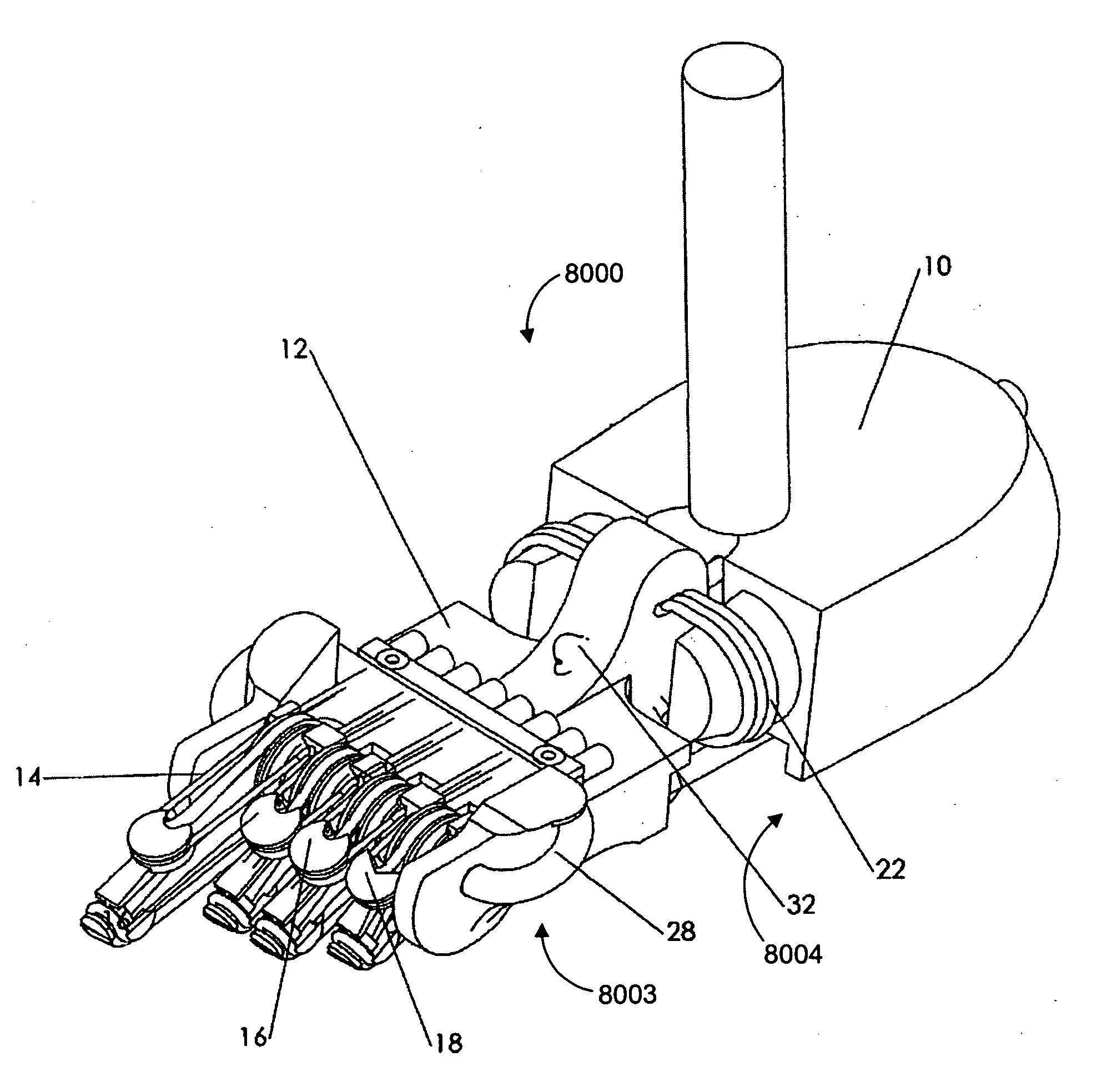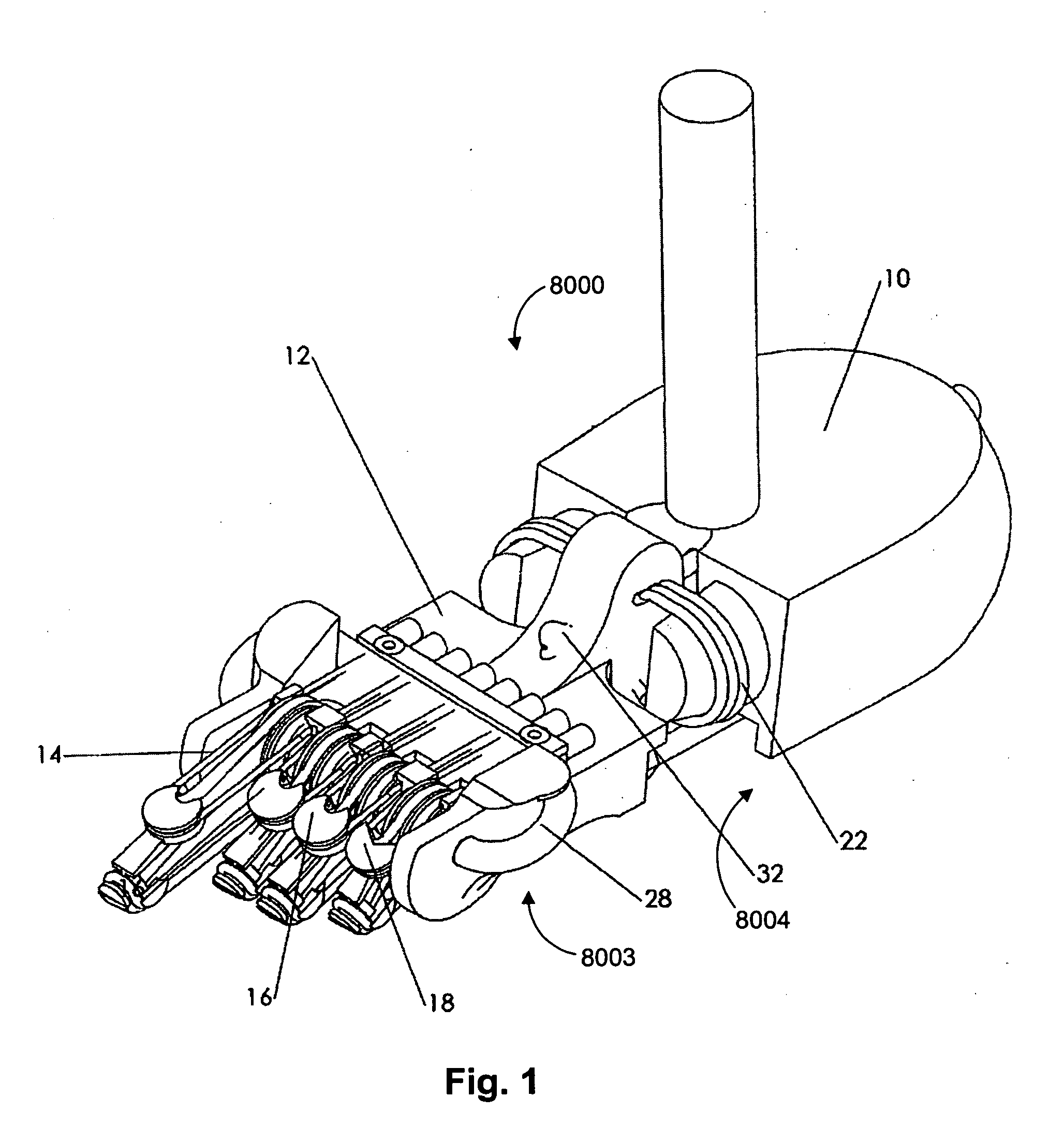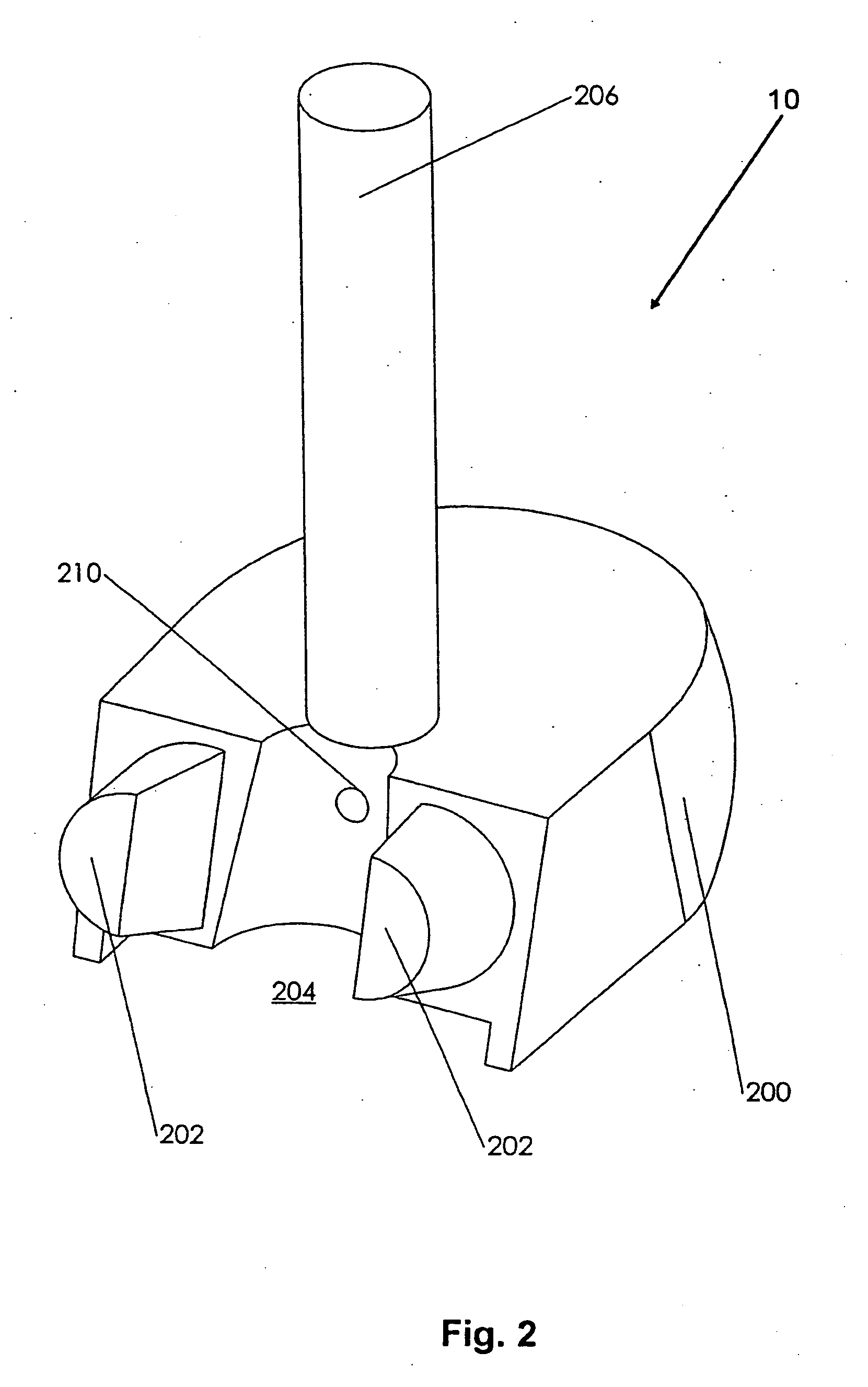Tensegrity joints for prosthetic, orthotic, and robotic devices
a technology of prosthetics and joints, applied in the field of prosthetics, orthotics, or robotic feet, can solve the problems of poor situation of people who lose a leg today, inability to walk up a grassy slope, and inability to overcome simple stairs. achieve the effect of elastic properties
- Summary
- Abstract
- Description
- Claims
- Application Information
AI Technical Summary
Problems solved by technology
Method used
Image
Examples
example 1
[0231] The prototype foot illustrated in FIGS. 1-10 may have been built using wood, brass, aluminum, plastic, yarn, and / or steel wire rope. It may be a right foot and may have one big toe, two medium toes, and one small toe.
example 2
[0232] The prototype orthotic boot illustrated in FIGS. 11-13 may have been built from wood, brass, aluminum, plastic, yarn, and / or steel wire rope cable. Several parts may be different from the foot illustrated in FIGS. 1-10. The boot may have four large toes, the midfoot joint attachment may be at about a 90-degree angle with the rest of the forefoot, and the parts on the outsides of the toes may be shorter.
example 3
[0233] The prototype ankle illustrated in FIGS. 14-17 may have been built using wood, brass, aluminum, plastic, yarn, and / or steel wire rope.
PUM
 Login to View More
Login to View More Abstract
Description
Claims
Application Information
 Login to View More
Login to View More - R&D
- Intellectual Property
- Life Sciences
- Materials
- Tech Scout
- Unparalleled Data Quality
- Higher Quality Content
- 60% Fewer Hallucinations
Browse by: Latest US Patents, China's latest patents, Technical Efficacy Thesaurus, Application Domain, Technology Topic, Popular Technical Reports.
© 2025 PatSnap. All rights reserved.Legal|Privacy policy|Modern Slavery Act Transparency Statement|Sitemap|About US| Contact US: help@patsnap.com



